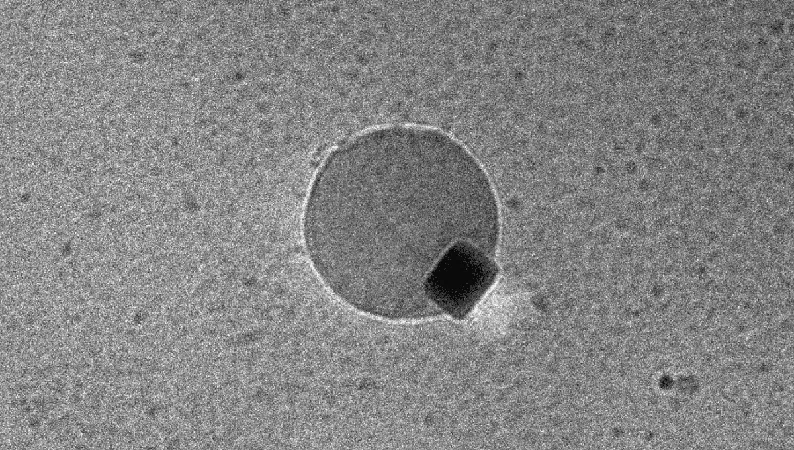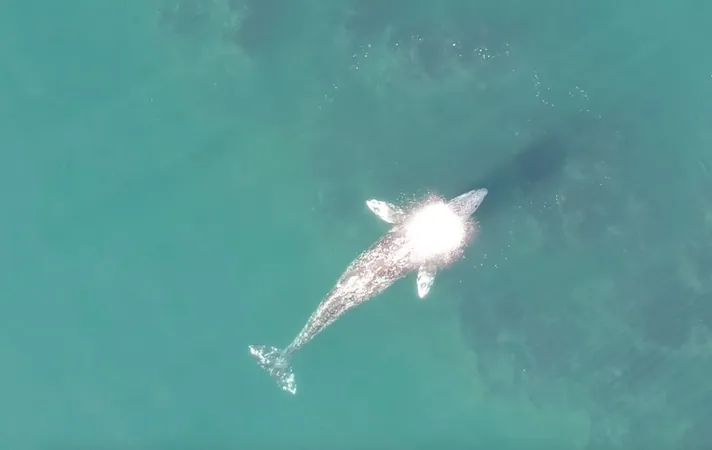
Mind-Blowing Discovery: Scientists Capture Hydrogen and Oxygen Creating Water at the Nanoscale!
2024-10-01
Breaking Ground in Water Generation
In a groundbreaking achievement, researchers have successfully captured the mesmerizing process of hydrogen and oxygen merging to create nanoscale water droplets for the very first time.
Innovative Techniques from Northwestern University
In a remarkable study conducted by a team from Northwestern University in Illinois, advanced techniques have been developed to observe gas molecules in real-time. This state-of-the-art approach involves trapping gas molecules within honeycomb-shaped nanoreactors, utilizing ultra-thin glassy membranes, which can then be analyzed using high-vacuum transmission electron microscopes.
The Enigma of Palladium
The research delved into a century-old enigma surrounding the rare metal palladium and its rapid ability to generate water from hydrogen and oxygen. "It’s a known phenomenon, but it was never fully understood," explained Yukun Liu, the lead author of the study. "To truly grasp the intricacies of this reaction, one must combine direct observation of water generation with atomic-scale structural analysis."
Astonishing Visuals of Water Formation
As the team observed hydrogen entering the palladium structure, they were astonished to witness the formation of a tiny bubble of water. "We believe it might be the smallest bubble ever directly viewed," Liu noted. "It was surprising for us; luckily, we recorded the process to prove our findings!"
Advanced Analytical Techniques
In addition to visual evidence, the research team employed electron energy loss spectroscopy to analyze the bubble, akin to the technology used by India's Chandrayaan-1 mission to confirm lunar water existence, but on a nano scale.
Implications for Space Exploration
The implications of this research are immense. As Vinayak Dravid, the senior author of the study, revealed, "By visualizing nanoscale water production directly, we can figure out the best conditions for generating water quickly in ambient environments." This has substantial applications for space exploration, potentially enabling astronauts to create water using gases and metal catalysts without extreme conditions.
Novel Insights on Water Production Rates
Interestingly, the study revealed that the order of introducing hydrogen and oxygen directly influenced the rate at which palladium produces water. This novel insight could pave the way for more efficient water production technologies, especially critical for long-duration space missions. In scenarios akin to that of Mark Watney in "The Martian," astronauts could preload palladium with hydrogen and introduce oxygen to generate drinkable water—a significant breakthrough for aspirations of establishing human bases on distant planets.
Revolutionizing Water Generation in Space
"Imagine the possibilities!" Dravid exclaimed. "We can bypass the need for combustion or extreme reactions—this could revolutionize how we generate water in space!"
A New Era in Space Exploration
With this revolutionary finding, the age-old challenge of water generation in harsh environments may soon be a thing of the past, opening up new horizons for humanity’s quest to explore beyond our planet. Stay tuned as we delve deeper into the ramifications of this remarkable discovery!


 Brasil (PT)
Brasil (PT)
 Canada (EN)
Canada (EN)
 Chile (ES)
Chile (ES)
 España (ES)
España (ES)
 France (FR)
France (FR)
 Hong Kong (EN)
Hong Kong (EN)
 Italia (IT)
Italia (IT)
 日本 (JA)
日本 (JA)
 Magyarország (HU)
Magyarország (HU)
 Norge (NO)
Norge (NO)
 Polska (PL)
Polska (PL)
 Schweiz (DE)
Schweiz (DE)
 Singapore (EN)
Singapore (EN)
 Sverige (SV)
Sverige (SV)
 Suomi (FI)
Suomi (FI)
 Türkiye (TR)
Türkiye (TR)